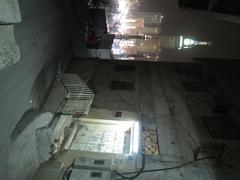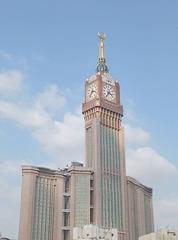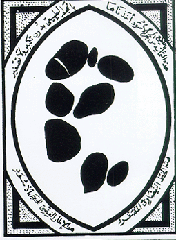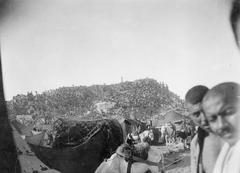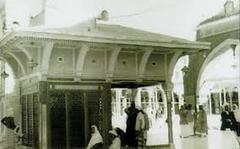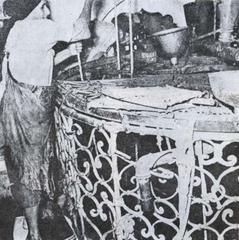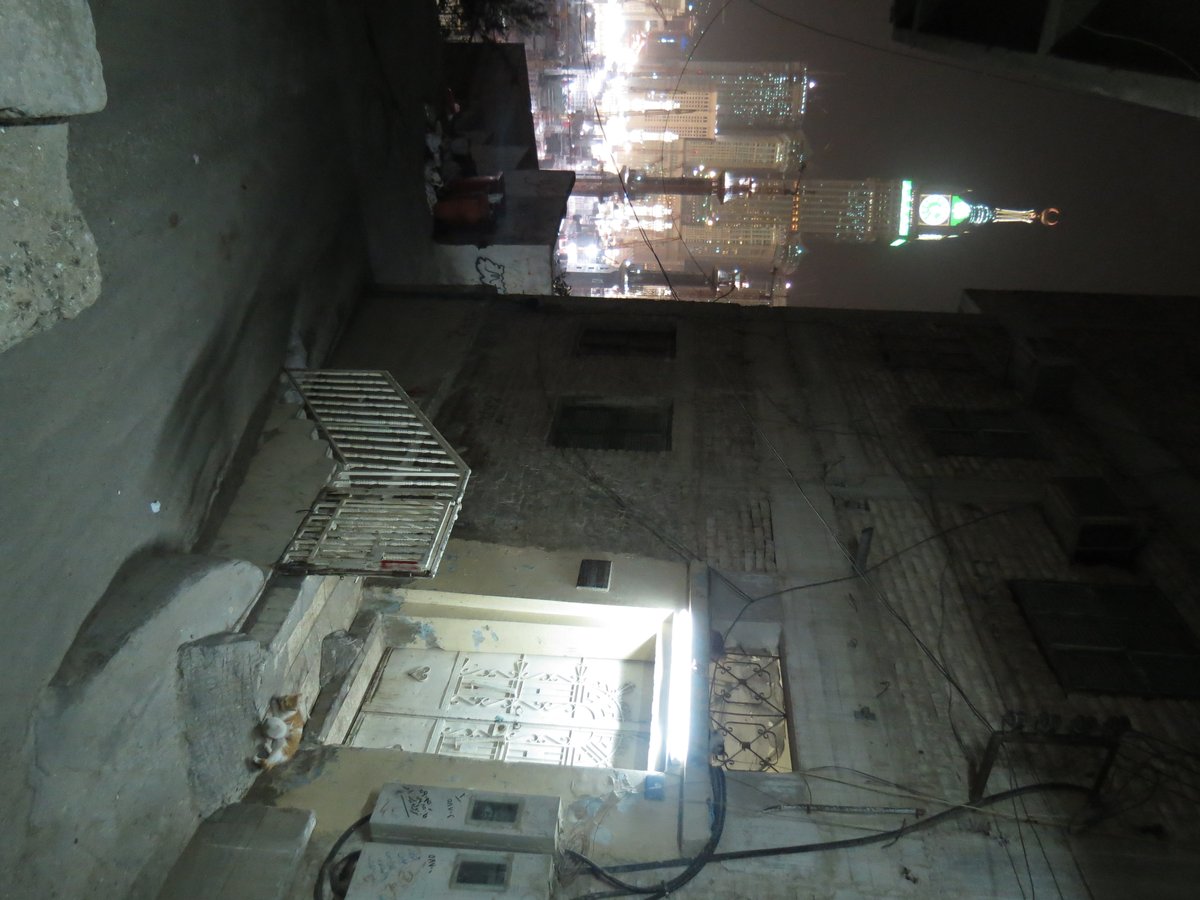
Abraj Al Bait Visiting Hours, Tickets, and Travel Guide: Mecca’s Iconic Landmark
Date: 14/06/2025
Introduction
Abraj Al Bait, also known as the Makkah Royal Clock Tower, is one of the world’s most recognizable architectural achievements and a focal point for millions of pilgrims visiting Mecca, Saudi Arabia. Rising 601 meters above the ground, this monumental complex is not only a feat of modern engineering but also an integral part of Mecca’s spiritual, cultural, and hospitality landscape. Located just steps from the Masjid al-Haram and the Kaaba, Abraj Al Bait combines luxurious accommodations, extensive shopping, and religious facilities, all while reflecting the city’s Islamic heritage and global significance (Tomorrow City; ArabMLS).
This comprehensive guide provides detailed insights into Abraj Al Bait’s history, architectural features, visiting hours, ticketing, accessibility, nearby historical sites, and essential travel tips. Whether you’re visiting for religious pilgrimage, architectural fascination, or cultural exploration, understanding these facets will help you make the most of your experience at this extraordinary landmark (humbo.com; makkah-madinah.accor.com).
Table of Contents
- Historical Background
- Architectural Features
- Cultural and Religious Significance
- Visitor Information
- Nearby Historical Sites and Attractions
- Frequently Asked Questions (FAQ)
- Conclusion
- References
Historical Background
Origins and Purpose
Abraj Al Bait was conceived as part of the King Abdulaziz Endowment Project, an initiative to modernize Mecca’s infrastructure and support the growing number of Hajj and Umrah pilgrims. The project aimed to blend traditional Islamic design with cutting-edge amenities, improving both spiritual and physical comfort for visitors (Tomorrow City; ArabMLS).
The site formerly housed the Ajyad Fortress, an Ottoman-era citadel. Its demolition in 2002 to make way for the new complex was met with international controversy, reflecting the ongoing debate between heritage preservation and the demands of modern religious tourism (webuildvalue.com).
Construction Timeline and Development
Construction of Abraj Al Bait began in 2004 and was completed in 2012, with an estimated cost of $15 billion. The Saudi Binladin Group undertook the construction, while Dar al-Handasah handled architectural design and engineering (Famous Buildings). The resulting complex was designed to serve as both a symbol of Saudi Arabia’s stewardship of Islam’s holiest sites and a comprehensive hospitality hub.
Architectural Features
Design and Symbolism
Abraj Al Bait consists of seven interconnected towers, with the central Makkah Royal Clock Tower dominating the skyline at 601 meters. The design fuses Islamic motifs—such as pointed arches, geometric patterns, and calligraphy—with the scale and technology of modern skyscraper construction. The golden crescent atop the clock tower, crafted from carbon fiber and coated in 24-carat gold, houses a VIP prayer room and stands as a symbolic beacon for the Muslim world (blog.aara.cloud; thetowerinfo.com).
Structural Highlights and Records
- Tallest Hotel Tower: The central tower is the tallest hotel in the world.
- Largest Clock Faces: Each of the four faces is 43 meters in diameter and visible up to 25 km away.
- Largest Building by Floor Area: The complex covers more than 1.5 million square meters (guinnessworldrecords.com).
- Observation Deck and Museum: The upper floors feature the Clock Tower Museum, dedicated to Islamic astronomy and timekeeping, and an observation deck with panoramic views of Mecca (ArabMLS).
Sustainability Initiatives
Despite its scale, Abraj Al Bait integrates eco-friendly solutions such as energy-efficient glass, solar panels, a recycling system, and rainwater harvesting, reflecting a commitment to environmental stewardship (ArabMLS).
Cultural and Religious Significance
Abraj Al Bait’s location—just meters from the Masjid al-Haram and the Kaaba—enhances the spiritual atmosphere of Mecca. The complex facilitates the pilgrimage experience by offering direct access to the Grand Mosque, extensive prayer halls, ablution facilities, and a lunar observation center that plays a vital role in marking Islamic months (blog.aara.cloud). The museum and educational exhibits foster a deeper understanding of Islam’s history, culture, and scientific heritage.
While the complex is celebrated for its contributions to the city’s modernization and hospitality, its construction over the historic Ajyad Fortress remains a subject of debate and reflection on balancing heritage and development (webuildvalue.com; wikipedia.org).
Visitor Information
Visiting Hours
- Observation Deck: Open daily from 9:00 AM to 10:00 PM.
- Makkah Royal Clock Tower Museum: Open from 10:00 AM to 6:00 PM.
- Abraj Al Bait Mall: Generally open from 10:00 AM to 11:00 PM.
Hours may vary during Ramadan, Hajj, and other religious holidays. Always check official sources for updates (makkah-madinah.accor.com).
Tickets and Entry
- Observation Deck and Museum: Tickets are required and can be purchased at the entrance or online; prices vary for adults and children, with discounts for groups.
- Shopping Mall and Public Areas: Free entry.
- Hotel and Event Spaces: Access may require hotel keycards or event passes.
Accessibility
Abraj Al Bait is fully accessible to visitors with disabilities. Features include elevators, ramps, accessible restrooms, and priority services. Wheelchairs are available upon request (ArabMLS).
Guided Tours and Special Events
Official guided tours of the complex, museum, and observation deck are available through authorized providers. Special events and cultural exhibitions are hosted throughout the year, highlighting both Saudi and Islamic heritage (humbo.com).
Accommodation, Shopping, and Dining
- Hotels: The complex hosts world-class hotels such as Fairmont, Raffles, Swissôtel, and Pullman Zamzam, with over 10,000 rooms—many offering views of the Kaaba (arabmls.org).
- Shopping: The five-level Abraj Al Bait Mall features over 4,000 shops offering everything from luxury goods to traditional crafts (humbo.com).
- Dining: A diverse range of restaurants and cafés serve international and local cuisine, many with views overlooking the Grand Mosque.
Travel Tips
- Entry Requirements: Only Muslims are permitted to enter the holy city of Mecca and Abraj Al Bait (saudiarabiaimmigration.org).
- Visa: Most travelers require a Saudi visa; e-visas should be applied for at least 72 hours in advance (saudiavisa.org).
- Dress Code: Modest attire is required. Men should wear long trousers and shirts; women must wear an abaya and cover their hair.
- Best Times to Visit: Early mornings or late afternoons are less crowded. Avoid Hajj and Ramadan for a more relaxed experience (thrillophilia.com).
- Health and Safety: Stay hydrated, use sun protection, and be mindful of crowd levels.
- Payments: Credit cards are widely accepted; carry some cash for small purchases.
Nearby Historical Sites and Attractions
- Masjid al-Haram and the Kaaba: The central focus of Islamic pilgrimage, immediately adjacent to Abraj Al Bait.
- Zamzam Well: Located inside the Grand Mosque, renowned for its blessed water.
- Jabal al-Nour and Cave of Hira: Site of the first Quranic revelation (humbo.com).
- Jabal Thawr: Where Prophet Muhammad and Abu Bakr sought refuge.
- Jannat al-Mu’alla Cemetery: Burial site of several relatives of the Prophet Muhammad.
- Mecca Museum: Showcasing artifacts from the city’s long history (travelsetu.com).
- Makkah Mall: A modern shopping destination outside Abraj Al Bait.
Frequently Asked Questions (FAQ)
Q: What are the visiting hours for Abraj Al Bait?
A: Observation deck: 9:00 AM to 10:00 PM; Museum: 10:00 AM to 6:00 PM; Mall: 10:00 AM to 11:00 PM. Hours may vary during religious holidays.
Q: Do I need tickets to enter the observation deck or museum?
A: Yes, tickets are required and can be purchased at the entrance or online.
Q: Is Abraj Al Bait accessible for people with disabilities?
A: Yes, the complex is fully accessible with elevators, ramps, and dedicated facilities.
Q: Are guided tours available?
A: Yes, official tours are offered; inquire at the complex or through authorized providers.
Q: Can I take photographs?
A: Photography is allowed in most public areas and the observation deck but is restricted in prayer halls. Always respect privacy and security guidelines.
Q: What hotels are located within Abraj Al Bait?
A: Leading brands such as Fairmont, Raffles, Swissôtel, and Pullman Zamzam offer luxury accommodations within the complex.
Conclusion
Abraj Al Bait is a fusion of Islamic tradition and contemporary innovation, providing an unparalleled experience for pilgrims and visitors. Its proximity to the Masjid al-Haram, world-record-setting structures, luxurious amenities, and comprehensive visitor services make it a must-visit landmark in Mecca. To optimize your visit, plan ahead by checking the latest visiting hours, booking tickets in advance, and exploring the surrounding historical sites.
For real-time updates, ticket bookings, and exclusive tours, download the Audiala app. Explore our related articles on Mecca’s historical treasures and make your pilgrimage or cultural visit truly unforgettable.
References
- Abraj Al Bait: A Comprehensive Guide to History, Architecture, and Visitor Information, 2025, (Tomorrow City)
- Religious and Cultural Significance of Abraj Al Bait: Visiting Hours, Tickets, and Mecca Historical Sites, 2025, (blog.aara.cloud)
- Architectural Features, Records, Facilities, and Visitor Information for Abraj Al Bait, 2025, (arabmls.org)
- Abraj Al Bait Visiting Hours, Tickets, and Essential Guide to Mecca’s Iconic Landmark, 2025, (humbo.com)
- Abraj Al Bait Complex Information, 2025, (makkah-madinah.accor.com)
- The Tower Info: Abraj Al Bait Building Details, 2025, (thetowerinfo.com)
- Webuildvalue Infrastructure News on Abraj Al Bait, 2025, (webuildvalue.com)
- Additional sources as cited in the article.
